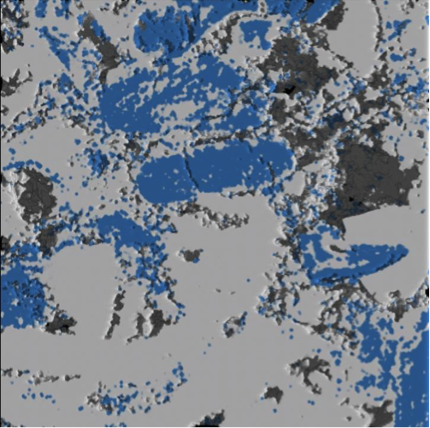Multi-scale pore network models
Contact: Tom Bultreys
Complex rocks with wide pore size distributions often show a two-phase flow behavior which deviates from classical relations. Pore-scale simulation methods can be crucial to improve the understanding of these phenomena. However, the wide range of length scales in these pore systems makes it hard to obtain the experimental input data for these simulations and causes great computational challenges. At PProGRess, a new dual pore network model is being developed to tackle these problems. The model treats the macroporosity as a network of pores and pore throats with idealized geometrical properties, based on a micro-CT scan of the rock in question. Zones of microporosity (with pores smaller than approximately 1 micron) are taken into account by considering them as globules of continuous porous medium which provide connectivity between the macro-pores. This connectivity, as well as the electrical and hydraulic conductivities which go along with it, are measured locally on the micro-CT scan, and is represented in the network by adding special links (“micro-links”). The resulting dual pore network model consists out of three types of network elements: macro-pores, macro-throats, and micro-links. As such, we attempt to take into account the complex coupling of microporous and macroporous networks in many geo-materials (i.e. flow through microporous regions can be both parallel as in series to flow through macroporous regions).

